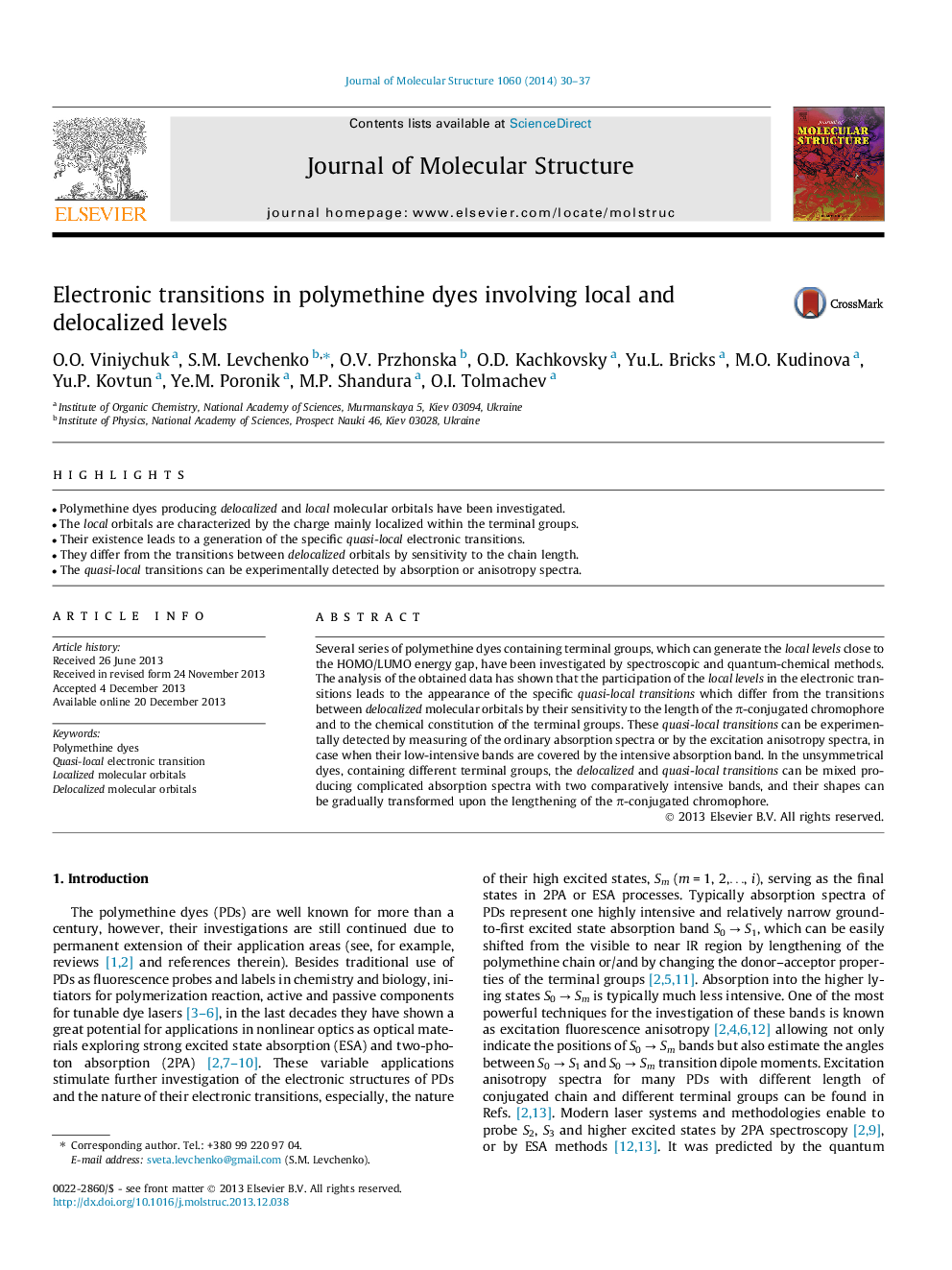| Article ID | Journal | Published Year | Pages | File Type |
|---|---|---|---|---|
| 1405616 | Journal of Molecular Structure | 2014 | 8 Pages |
•Polymethine dyes producing delocalized and local molecular orbitals have been investigated.•The local orbitals are characterized by the charge mainly localized within the terminal groups.•Their existence leads to a generation of the specific quasi-local electronic transitions.•They differ from the transitions between delocalized orbitals by sensitivity to the chain length.•The quasi-local transitions can be experimentally detected by absorption or anisotropy spectra.
Several series of polymethine dyes containing terminal groups, which can generate the local levels close to the HOMO/LUMO energy gap, have been investigated by spectroscopic and quantum-chemical methods. The analysis of the obtained data has shown that the participation of the local levels in the electronic transitions leads to the appearance of the specific quasi-local transitions which differ from the transitions between delocalized molecular orbitals by their sensitivity to the length of the π-conjugated chromophore and to the chemical constitution of the terminal groups. These quasi-local transitions can be experimentally detected by measuring of the ordinary absorption spectra or by the excitation anisotropy spectra, in case when their low-intensive bands are covered by the intensive absorption band. In the unsymmetrical dyes, containing different terminal groups, the delocalized and quasi-local transitions can be mixed producing complicated absorption spectra with two comparatively intensive bands, and their shapes can be gradually transformed upon the lengthening of the π-conjugated chromophore.
